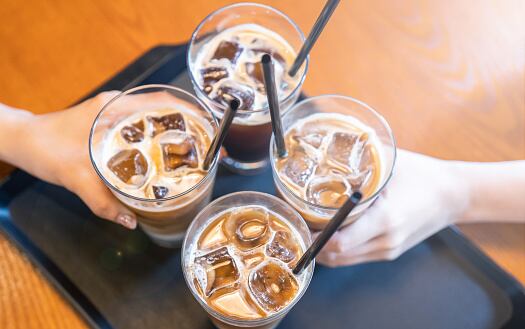There are 5.4 million wine drinkers aged 18 to 29 years, and 20% drink on a weekly basis.
FoodNavigator-Asia spoke to Émilie Steckenborn, head of education at Treasury Wine Estates to find out what is driving the shift in these Chinese millennials’ drinking habits.
“We find that these millennials are drinking wine for two reasons. Socialising and relaxation.
“Wine is usually consumed in the presence of friends in a casual setting.”
Income and education also factored into wine consumption.
She added, “We find that people and millennials in Tier 1 and 2 cities like Shanghai and Beijing, earning around RMB 10,000 per month are typically consumers as they are able to afford the wine.”
“For the well-travelled millennial, if they’ve lived, studied, worked abroad, they are more likely to drink wine instead of Baijiu.
Creativi-tea
On what influences millennials to move away from traditional beverages like tea and Baijiu, Steckenborn said: “Baijiu is still a very traditional drink, and highly associated to business, higher alcohol levels, and mature drinkers. It doesn’t appeal to millennials.”
She sees them moving away from traditional tea too, but into new categories, such as bubble tea. She said brands such as HEYTEA and LELECHA were attracting millennials with innovative and creative products.
Raise a glass
Steckenborn shared three factors that millennials look out for in wine: red wine, label, and price.
She said taste was not always the first indicator in purchase decision.
“There is a misconception that China likes sweet wines. It probably stemmed from the 1980s and 1990s, when ice wine was a big category in China.”
According to the Canadian Vintners Association, Canada is one of the world’s biggest producers of ice wine. The report stated China is its largest export market, at over 150,000 litres valued at $11.5 million in 2017.
“But now, 80% of wine consumed in China is red wine, dominated by Cabernet Sauvignon.”
“It goes the same for younger people. They prefer a softer red wine over white or sparkling.
She added, “Drinks like champagne are not generally well received in China yet, and it’s expensive for millennials, costing up to 1000 RMB.
Another factor going into a millennial’s decision in choosing a wine is the label. “If it’s a famous wine, it will generally sell.”
Lastly, a large majority of millennials are still price sensitive. But they are willing to pay more money for a different experience.
Steckenborn told us wines that do better in China were local brands like Changyu, and imported ones like Penfolds.
Changyu is a cheaper red wine, at 30 RMB, and has the highest penetration rate in China. Penfolds, also a red wine, albeit slightly more expensive about 170 RMB, is becoming the fastest growing wine in the county.
Wine fraud
In a country notorious for fake products, wine is no different. Steckenborn agreed that there is a problem with fake wine, but added that online shopping could help reduce the problem.
“When you buy alcohol online on Tmall, JD.com, Walmart etc, it’s more secured than going to a store, and not knowing if it’s 100% real.
“It’s also so efficient to order alcohol online in China. Order, pay, delivered the next day. That takes away so many barriers. Why would you go to a wine store?
“The best thing about purchasing online is you can fact check, take pictures, compare prices, check reviews, and get a discount. There are so many more incentives to buying online than in stores.”




